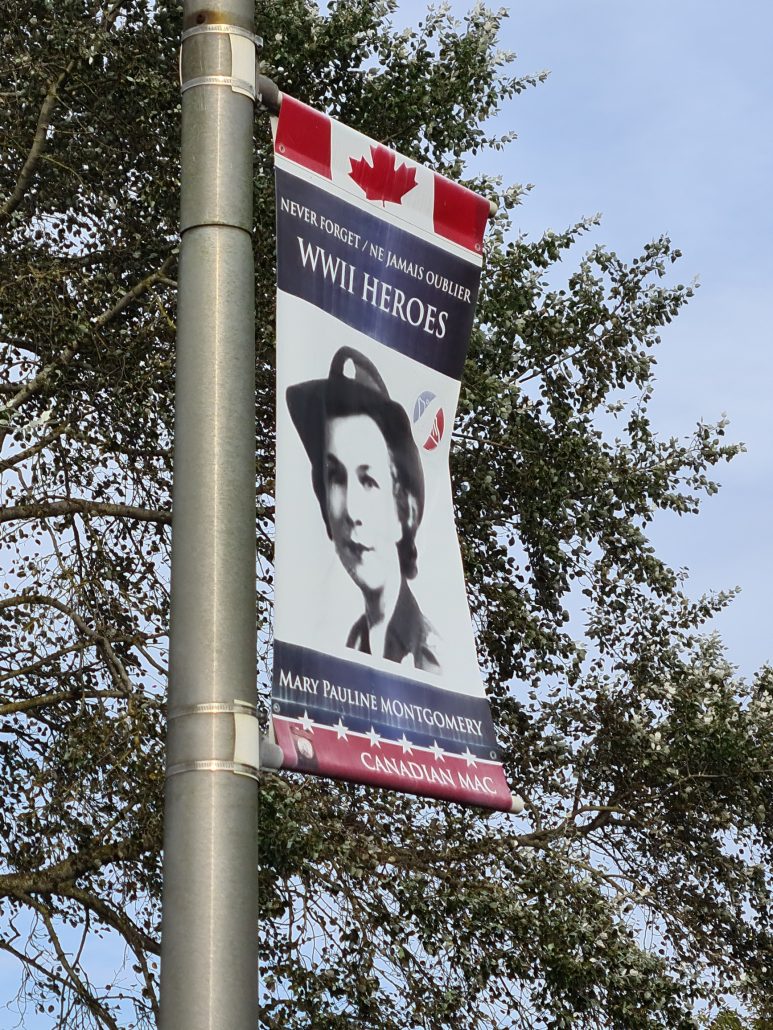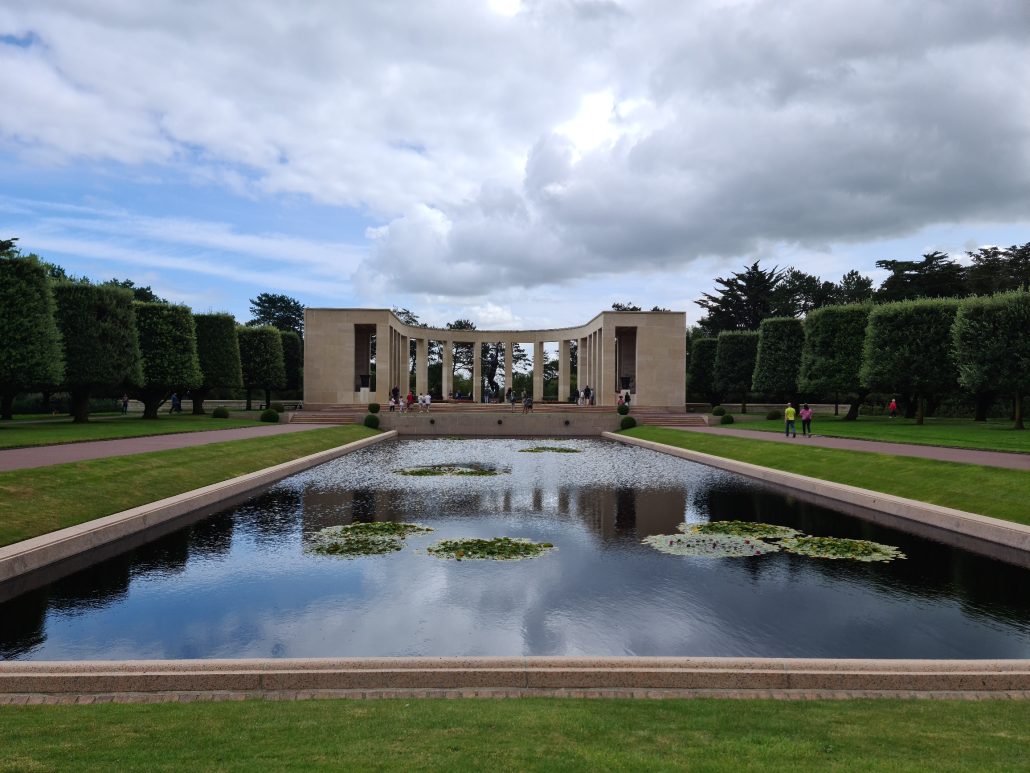I knew. Of course, I knew. I’ve seen the movies. I’ve read the books. I was in history class the day we talked about the Normandy Invasion. But there’s knowing and there’s knowing.
I had no idea it was so big. The numbers are staggering.
The D-Day operation of June 6, 1944, brought together the land, air, and sea forces of the allied armies in what became known as the largest amphibious invasion in military history. The operation, given the codename OVERLORD, delivered five naval assault divisions to the beaches of Normandy, France. The beaches were given the code names UTAH, OMAHA, GOLD, JUNO, and SWORD. The invasion force included 7,000 ships and landing craft manned by over 195,000 naval personnel from eight allied countries. Almost 133,000 troops from the United States, the British Commonwealth, and their allies, landed on D-Day. Casualties from these countries during the landing numbered 10,300. By June 30, over 850,000 men, 148,000 vehicles, and 570,000 tons of supplies had landed on the Normandy shores. Fighting by the brave soldiers, sailors, and airmen of the allied forces western front, and Russian forces on the eastern front, led to the defeat of German Nazi forces. On May 7, 1945, German General Alfred Jodl signed an unconditional surrender at Reims, France.

Both world wars fascinate me on a level I find difficult to explain. Not so much for what they achieved (or didn’t achieve) but from the perspective of those who were conscripted or even volunteered to go fight a fight that perhaps wasn’t theirs.
Something I read in a James Patterson book recently came to mind:
We, the unwilling, led by the unknowing, are doing the impossible for the ungrateful.
I looked it up, curious to know who said it and found it attributed to Czech historian, diplomat and Slavist Konstantin Josef Jireček.
The full quotation continues:
We have done so much, for so long, with so little, we are now qualified to do anything with nothing.
For as long as I can remember, I’ve wanted to see Omaha Beach. Why this one of the five beaches I don’t know. I suspect it was because here, things didn’t quite go to plan.
Surprisingly, I’d done my homework.
There are so many museums to choose from. I knew I wouldn’t have the headspace to read and read and read. I wanted something visual. I wanted a documentary, a movie, something I could watch and listen to. I settled on the D-Day Experience at Carentan les Marais. There, in the 3D movie theatre, we watched a remastered version of Pascal Vuong’s documentary D-Day Normandy 1944.
I had no idea. So many soldiers. So many ships. So many planes. So many deaths.
Later, after a briefing by Colonel Wolverton’s avatar, we boarded a genuine C-47 aircraft and took a simulated flight that transported us back to 6 June 1944. Looking out the windows at the traffic jam in the sea below and seeing planes beside us blown apart, it was all a little too real and yet not real enough.
From the opening minutes of the documentary, until we left Bayeux for Granville, all I could think about was how they felt – the soldiers – on that day. And what about the local resistance? And indeed the residents. What must it have felt like to be there, to hear the bombs, see the bodies, feel the hope that perhaps, just perhaps, liberation was looming?


Visiting the adjacent museum at Dead Man’s Corner, I wondered about the German paratroopers – the 6th German parachute infantry regiment (PIR) nicknamed the Green Devils – who fought the 502nd PIR of the 101st Airborne under American Colonel “Iron Mike” Michaelis from 6 to 8 June before retreating to Carentan. They were the occupiers, the baddies, the ones to be defeated and yet they were someone’s son, brother, uncle, husband, father.
War depersonalises, dehumanises, desensitises.

I stood in front of the building and looked down the D-974, that stretch of road now known as Purple Heart Lane because so many US soldiers died liberating it.
“Dead Man’s Corner,” at a road junction south of Saint-Côme-du-Mont, has become one of Normandy’s most famous landmarks. The story of what happened there has become legendary: an American Stuart tank was destroyed at the intersection and remained in place for several days, the dead body of the commander hanging out of the turret. The troops started to refer to the spot as “the corner with the dead man in the tank” and later simply as “Dead Man’s Corner.” As with all legends, the true story is much more complicated.
Niels Henkemans, with Sean Claxton and Charles C. Roberts, Jr., wrote a fascinating article where they uncover the truth.


As we drove towards Omaha Beach, we didn’t talk much. The sheer scale of the operation was mindblowing.
It was a blue-sky day with just enough wind to lift the flags. Lots of people sat on rocks and walls and looked out towards the sea, each lost in their own thoughts. It’s impossible not to be moved, not to feel the tug of the past while swatting away the recurring questions – What did we learn? Did we learn? Will we ever learn?

Les Braves, a large steel sculpture by Anilore Banon, takes centre sand.
I created this sculpture to honour the courage of these men: Sons, husbands and fathers, who endangered and often sacrificed their lives in the hope of freeing the French people.
Les Braves consists of three elements:
The wings of Hope – So that the spirit which carried these men on June 6th, 1944 continues to inspire us, reminding us that together it is always possible to change the future.
Rise, Freedom! – So that the example of those who rose against barbarity, helps us remain standing strong against all forms of inhumanity.
The Wings of Fraternity – So that this surge of brotherhood always reminds us of our responsibility towards others as well as ourselves.
On June 6th, 1944 these men were more than soldiers, they were our brothers.

It didn’t feel right somehow to stop and eat, to make it a touristy experience and yet that’s what we were. Tourists. It felt disrespectful. So we moved on, to visit the American War Cemetery (blog coming soon to Dying to Get In), and from there to Bayeux.

In Sainte-Mère-Église, I began to get a real sense of what it might have been like as a French resident on that day in June 1944 – and indeed on subsequent days. It was here, on the church steeple, that US paratrooper John Steele, with shrapnel in his leg, hung from the church tower for 2.5 hours. His story is worth reading, particularly given that all he went through he wanted to be buried in Normandy.


It seems like every other building had a photograph of the liberation. What must it have been like? Did it create a lasting bond between the liberator and those liberated? I found a moving account in a book by Mary-Louise Roberts – D-Day through French eyes:
Once again, the mystery of the night deepens. We stay outside waiting for who-knows-what, keeping our voices low. Suddenly, there is an extraordinary blaze of light. The horizon in the direction of the sea lights up as if reflecting an immense fire that has been lit over the ocean. The formidable growl of marine artillery can be heard even here, although muffled by and submerged in a multitude of other inchoate sounds. The black silhouettes of airplanes arrive in the clouds and turn around in the sky. One of them passes just above our little school; it puts on its lights and releases . . . what? For an instant, we think it’s a stick of bombs. But we are only starting to throw ourselves on the ground when parachutes open and float down like a mass of bubbles in the clear night. Then they scatter before disappearing in the confusion of the nocturnal countryside.
Another airplane passes over and releases its cargo. At first, the parachutes seem carried by the wake of the plane; then they drop vertiginously downward; finally the silk domes open. The descent gets slower and slower as they approach the ground. Those men whose dangling legs can clearly be seen get there a little more rapidly than those who hold bags of foodstuffs, equipment, ammunition. In a few moments, the sky is nothing more than an immense ballet of parachutes.
The spectacle on the earth is no less extraordinary. From all corners of the countryside shoot bursts of multicolored rockets as if thrown by invisible jugglers. In the fields all around us, big black planes slide silently toward the earth. Like flying Dutchmen, they land as if in a dream. These are the first groups of gliders. Our parachutist had been part of a group of scouts sent to signal the descent and landing zones.
(Btw, did you ever hear about the Rupert parachute dummies?)




Banners put faces to names and names to faces remind travellers of those who fought the good fight. While I couldn’t find anything about Mary Pauline, I did stumble on a rather disturbing statistic – One in seven Canadian soldiers killed between June 6–11 were murdered after surrendering, in a series of executions that would be coined the Normandy Massacres. I checked the source and found Howard Margolin’s book Conduct Unbecoming published by University of Toronto Press.
On The Afternoon of 7 June 1944, Lorne Brown, a Private Serving with the 3rd Canadian Infantry Division in Normandy, was bayoneted to death while trying to surrender to troops of Nazi Germany’s elite 12th SS Division ‘Hitler Youth.’ Over the next ten days, more than a 150 Canadian soldiers were brutally murdered after capture by the 12th SS. Conduct Unbecoming reveals, for the first time, the full story of this atrocious chapter in history.Drawing extensively on archival sources, Margolian follows both the German and Canadian troops from their enlistment as raw recruits through to their clash of arms in the fateful days that followed the Allied landings in Normandy. As the Hitler Youth Division gave ground, the newly liberated sectors began to yield grim evidence of the fate of Canadian prisoners. Despite months of investigation by Allied courts, however, only two senior officers of the 12th SS were ever tried for war crimes, while the remainder of the perpetrators were allowed to return to Germany. In its explosive final chapters, Conduct Unbecoming exposes the causes of this flagrant inaction — an inept and indifferent Canadian military justice system, and a Canadian government all too willing to let bygones be bygones.
The youngest of those who fought in June 1944 would be in their 90s today. In June this year, approaching the anniversary, it was estimated that six British veterans of the D-Day landings were still alive. Add Canadians, Americans, and other allied vets and you might get a few thousand. I wonder if they still have nightmares…
Share this:
- Click to share on Twitter (Opens in new window)
- Click to share on Facebook (Opens in new window)
- Click to share on Pinterest (Opens in new window)
- Click to share on LinkedIn (Opens in new window)
- Click to share on Reddit (Opens in new window)
- Click to share on WhatsApp (Opens in new window)
- Click to share on Pocket (Opens in new window)
- Click to share on Telegram (Opens in new window)
- Click to email a link to a friend (Opens in new window)








2 responses
A story never to be forgotten, and thankyou for helping keep it alive.